How to Grow Tomatoes
Growing tomatoes is a rewarding experience that caters to gardeners of all levels, from beginners to seasoned greenthumbs.
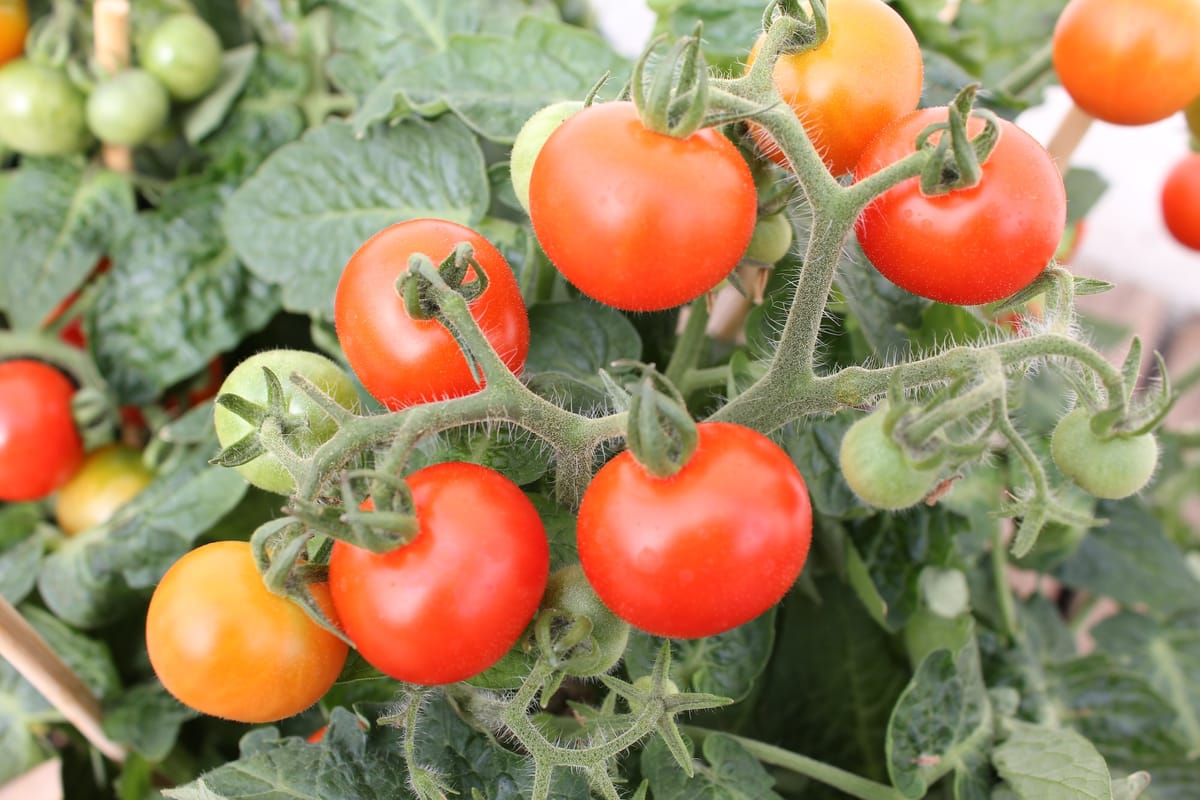
Tomatoes are not only a staple in kitchens around the world, but they also offer a wealth of varieties to suit different climates and taste preferences.
When starting out, the key to a healthy tomato crop lies in understanding the basics of selecting the right type of tomatoes for your garden, providing them with the right conditions to thrive, and knowing the steps involved from seedling to harvest.
Upon choosing your tomato varieties, preparing your garden to support their growth is essential.
Tomatoes need well-drained, fertile soil and plenty of sunlight.
Whether you’re planting in the ground, raised beds, or containers, ensure that your tomatoes have the space to grow and the support they need, such as cages or stakes, as they can become quite heavy as they bear fruit.
Regular maintenance, including watering, pruning, and monitoring for pests and diseases, will keep your plants robust and productive.
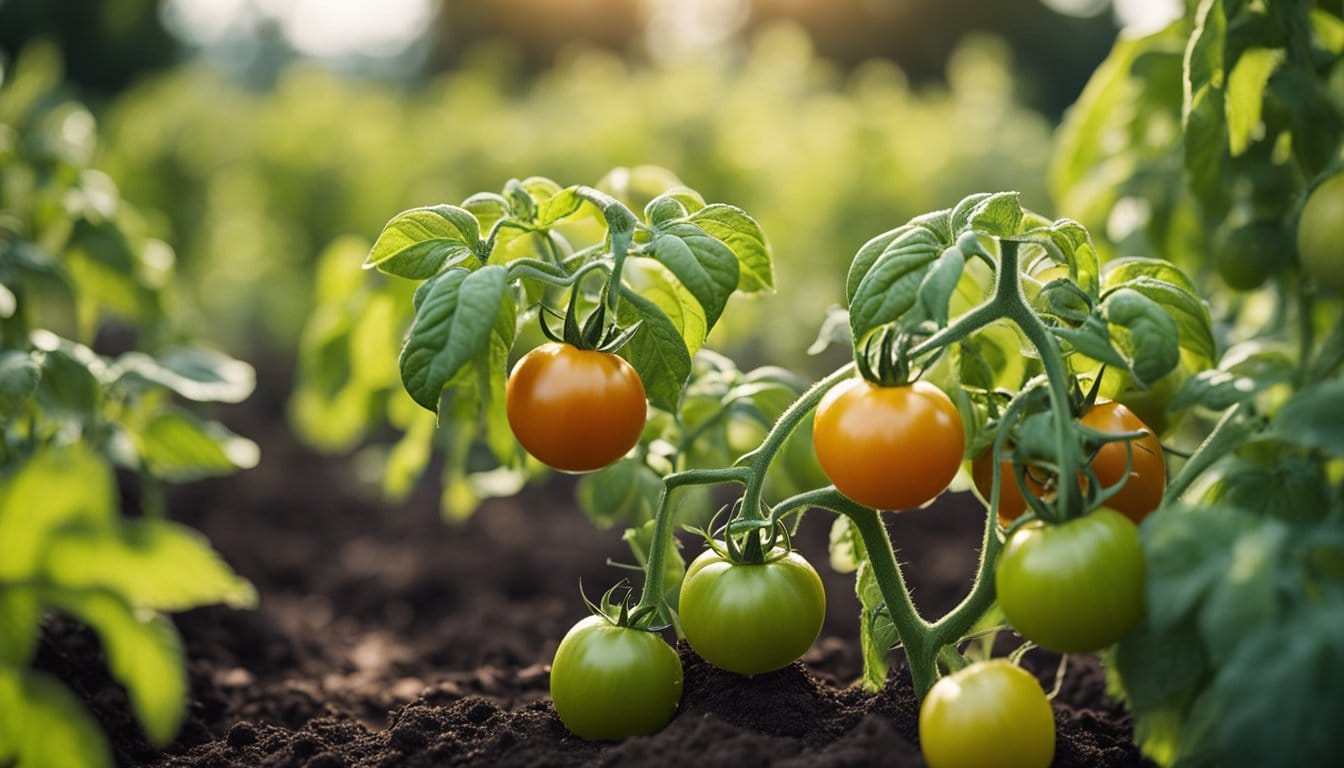
Key Takeaways
- Selecting suitable tomato varieties and preparing the garden soil are crucial first steps.
- Planting tomatoes requires full sun exposure and physical support as they grow.
- Proper maintenance ensures healthy growth and a bountiful harvest.
Choosing the Right Tomato Varieties
Selecting the right variety is essential for your gardening success when planning to grow tomatoes. Factors such as growth habits and intended use should guide your choice.
Understanding Indeterminate and Determinate Tomatoes
Indeterminate tomatoes are varieties that grow and produce fruit continuously throughout the growing season until stopped by the first frost.
They can reach heights of 6 feet or more and require staking or caging for support.
Examples of indeterminate tomatoes include 'Black Krim' and 'Cherokee Purple.' These are suited for you if you have the space and desire a steady harvest.
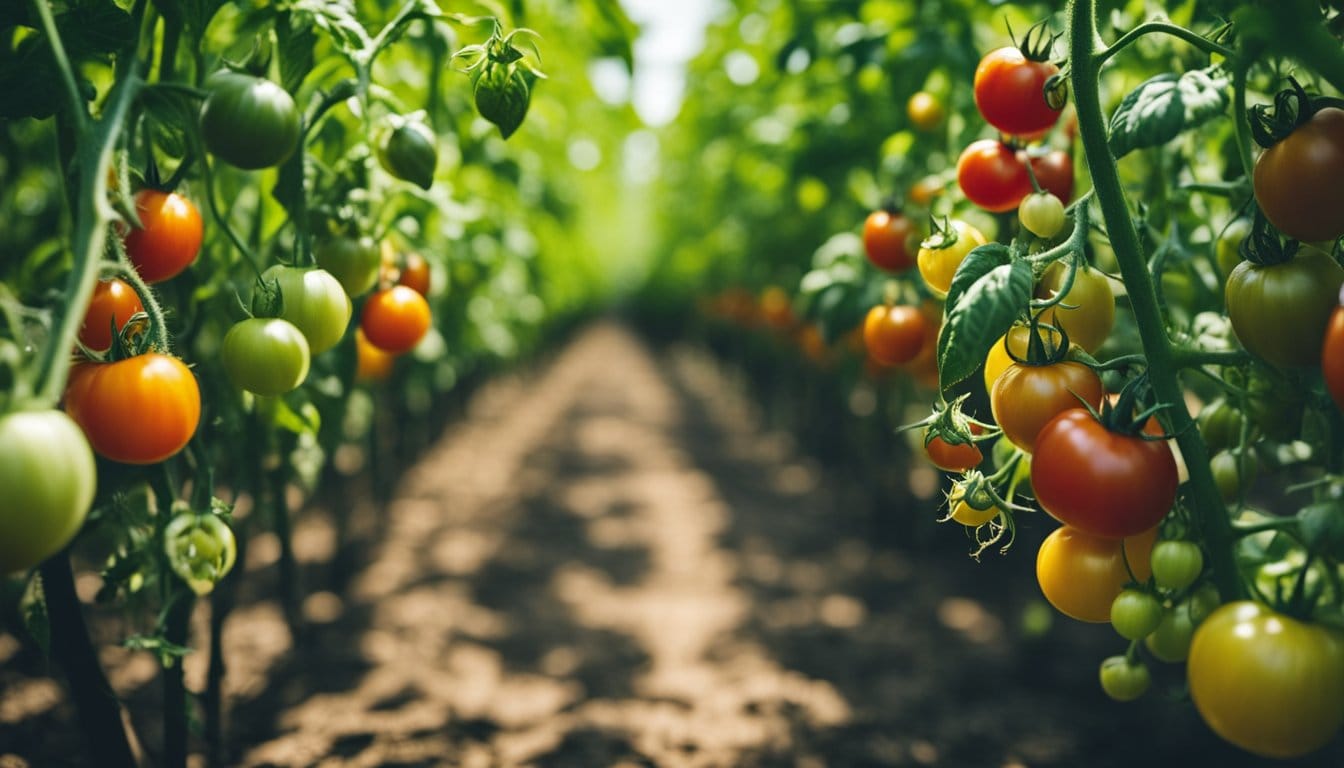
On the other hand, determinate tomatoes grow to a fixed size, usually 3 to 4 feet tall, and bear fruit all at once. After the main harvest, these plants often decline.
Varieties like 'Roma' and 'Bush Early Girl' fall under this category. Choose determinate tomatoes if your space is limited or you prefer to harvest all at once, perhaps for canning.
Exploring Heirloom and Cherry Tomatoes Options
Heirloom tomatoes are varieties that have been passed down, typically for 50 years or more, and are open-pollinated, meaning they'll reproduce true to the parent plant.
These tomatoes are known for their rich flavors and diverse range of colors and shapes. Examples include 'Brandywine' and 'San Marzano.'
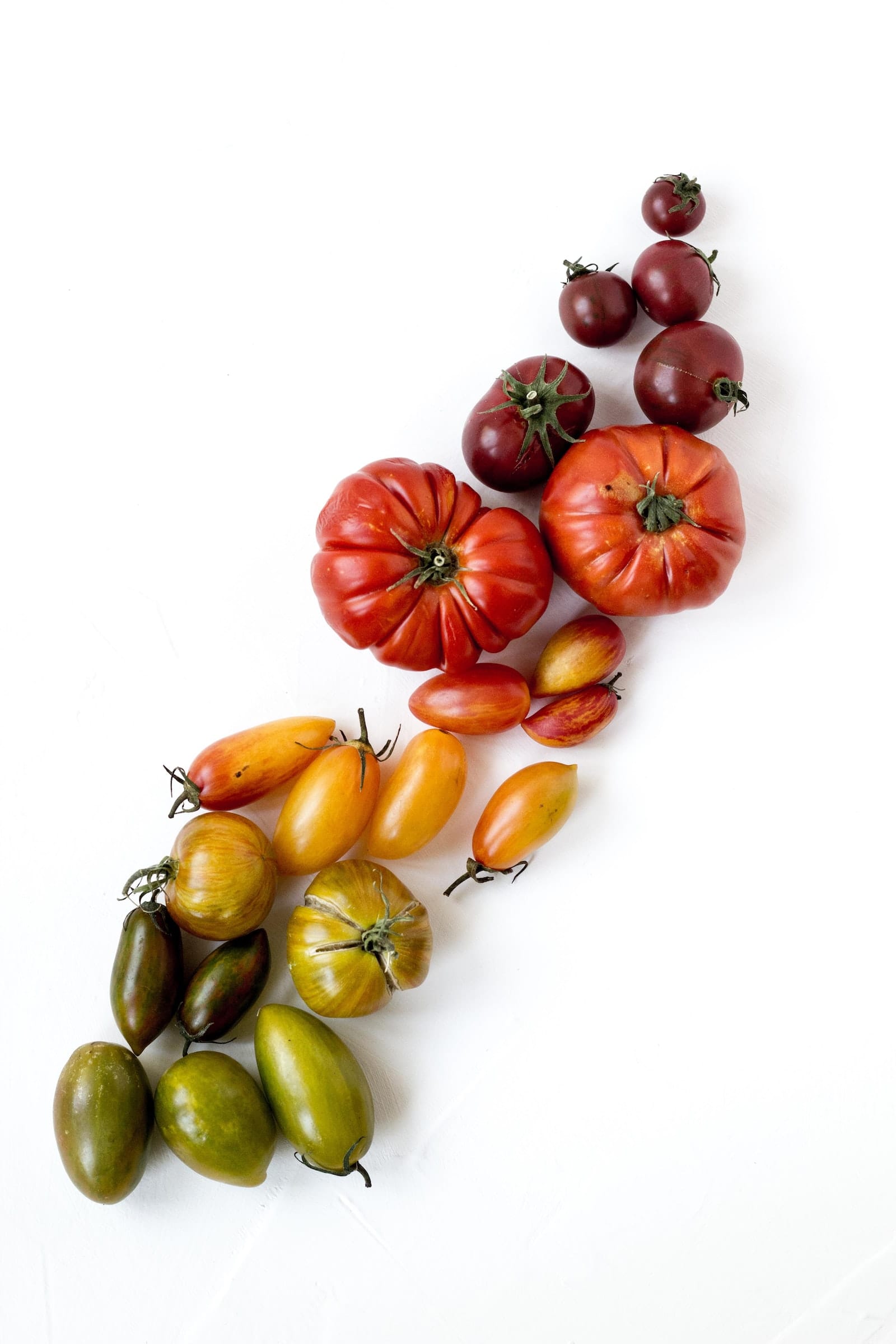
Cherry tomatoes are small, bite-sized tomatoes perfect for snacking, salads, and adding a burst of flavor to any dish.
They can be indeterminate, with varieties such as 'Sweet Million,' or determinate, with types like 'Tiny Tim.'
Due to their size, cherry tomatoes are also a good choice if you're limited to container gardening.
By understanding these categories and considering your garden space and culinary preferences, you can narrow down the vast array of tomato varieties to find the perfect ones for your garden.
Preparing the Garden
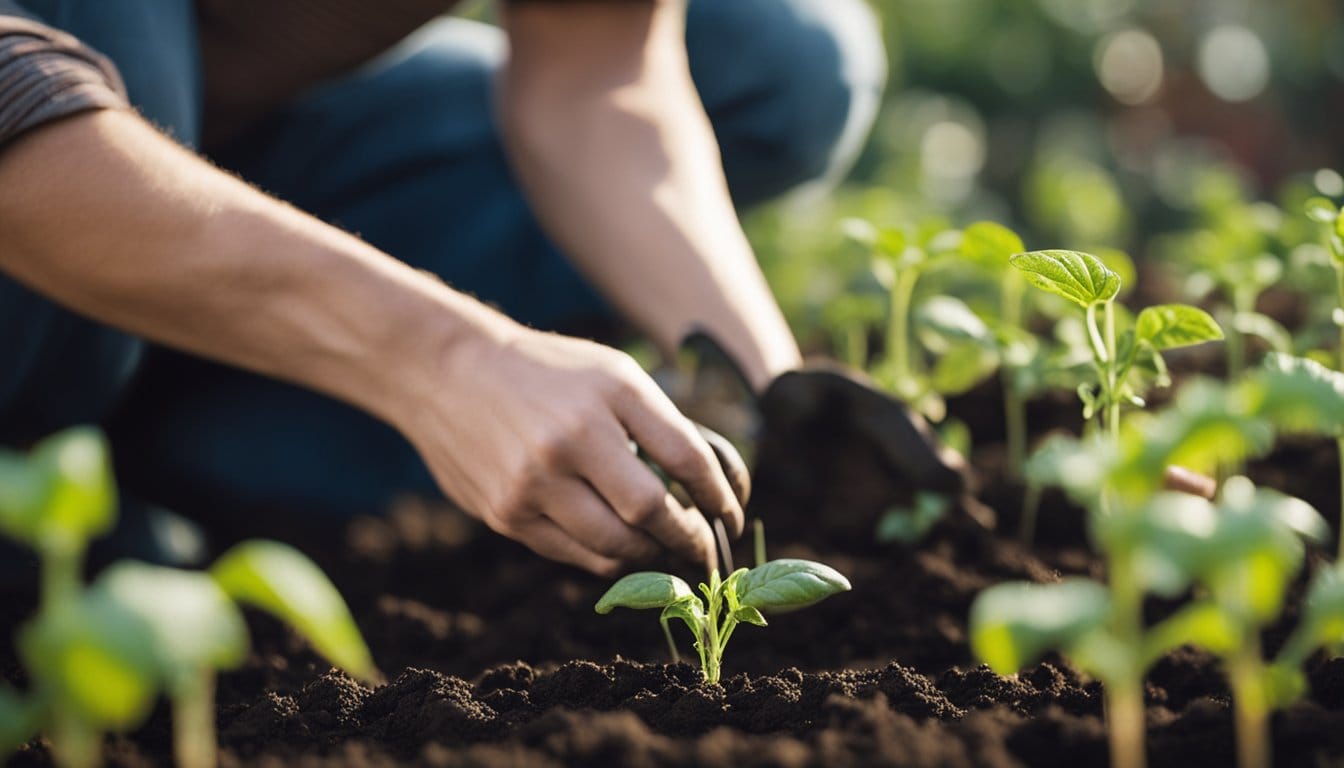
Before planting tomatoes, it's essential to ensure that your garden soil is in the best condition to support healthy growth.
This involves adjusting the soil pH, choosing a location with ample light, and enriching the soil with compost and fertilizers.
Testing and Adjusting Soil pH
To cultivate tomatoes that are both flavorsome and abundant, testing your garden soil's pH level is crucial.
Tomatoes thrive in slightly acidic soil, with an ideal pH range of 6.2 to 6.8. Use a soil test kit to determine your soil's current pH accurately.
If your soil is too acidic, you can raise the pH by incorporating calcium carbonate or lime.
Adding sulfur or organic mulch can help lower the pH of soil that is too alkaline.
Selecting the Best Location for Light
Tomato plants require a location that receives at least eight hours of full sun daily to produce a healthy crop.
Full sun encourages strong growth and helps prevent diseases.
When selecting a spot for your tomato garden, ensure that it's not shaded by trees, walls, or buildings.
The more sunlight your tomatoes receive, the better they will grow.
Using Compost and Fertilizers
Proper soil nutrition is vital for growing tomatoes successfully.
Before planting, mix in generous amounts of compost to provide essential nutrients and improve soil texture.
Compost also enhances soil fertility and drainage.

When applying fertilizers, choose a balanced fertilizer with adequate nitrogen, phosphorus, and potassium levels.
Additionally, tomatoes benefit from added calcium, which can be supplied through bone meal or a specialized tomato fertilizer to prevent blossom end rot.
Planting and Supporting Tomato Plants
Planting tomatoes with the correct technique is crucial for a healthy start.
At the same time, proper support systems like stakes, cages, or trellises are fundamental for the growth and productivity of your plants.
Proper Planting Techniques
When you plant tomatoes, choose a well-draining location with abundant sunshine.
Plant after the last frost date to ensure a safe growing environment. Dig a hole deep enough to bury two-thirds of the seedling, encouraging a stronger root system.
Ideally, your tomato plants should be spaced about 2 feet apart in rows 4 feet apart to allow adequate air circulation and sunlight penetration.
Add a handful of compost to the planting hole for nutrients and cover carefully with soil, firming it down around the base to eliminate air pockets.
Staking and Using Cages or Trellises

Support for your tomato plants is necessary to keep the fruit off the ground and reduce pests and diseases.
For staking, install a sturdy stake next to the plant at planting time to avoid root damage later on.
Tie the plant to the stake loosely with garden twine, allowing room for growth.
If you prefer cages, place a cage around the plant shortly after planting.
A trellis system requires tying horizontal lines of twine between vertical posts. As your tomato plants grow, weave them in and out of the twine for support.
Regularly check and adjust the ties to ensure they do not cut into the growing stems.
Maintenance and Care for Growth
To achieve a bountiful tomato harvest, you need to provide consistent care throughout the growing season.
Regular watering, proper pruning, pest control, and strategic companion planting are key to healthy growth and a plentiful yield.
Watering Appropriately
Provide your tomato plants with 1-2 inches of water per week from rain or manual watering.
Water at the base to keep the foliage dry and reduce the risk of diseases. Mulching can help retain moisture and prevent water evaporation.

- Rainfall: Monitor and reduce manual watering accordingly.
- Mulch: Use to maintain soil moisture.
- Method: Drip irrigation or soaker hoses are preferred.
Pruning and Managing Suckers
Remove suckers that form in the crotch joint of two branches, which will improve air circulation and fruit production.
- When to Prune: When suckers are 3-4 inches long.
- Airflow: Increases to reduce disease risk.
Protecting Plants from Pests and Diseases
Inspect your tomato plants regularly for pests and diseases.
Aphids and tomato hornworms are common pests that can be removed by hand or with organic treatments.

To avoid diseases, rotate crops annually and avoid watering foliage.
- Common Pests: Aphids, hornworms.
- Prevention: Hand-picking, organic pesticides, crop rotation.
Companion Planting
Planting certain flowers and herbs near your tomatoes can deter pests and even improve the flavor of your tomatoes.
Marigolds, for example, can repel nematodes and other pests.
- Beneficial Companions: Basil, marigold, garlic.
- Avoid: Planting close to potatoes, as they can share diseases.
Remember to be vigilant about the danger of frost and provide protection if an unexpected frost is forecasted.
Harvesting and Enjoying Tomatoes
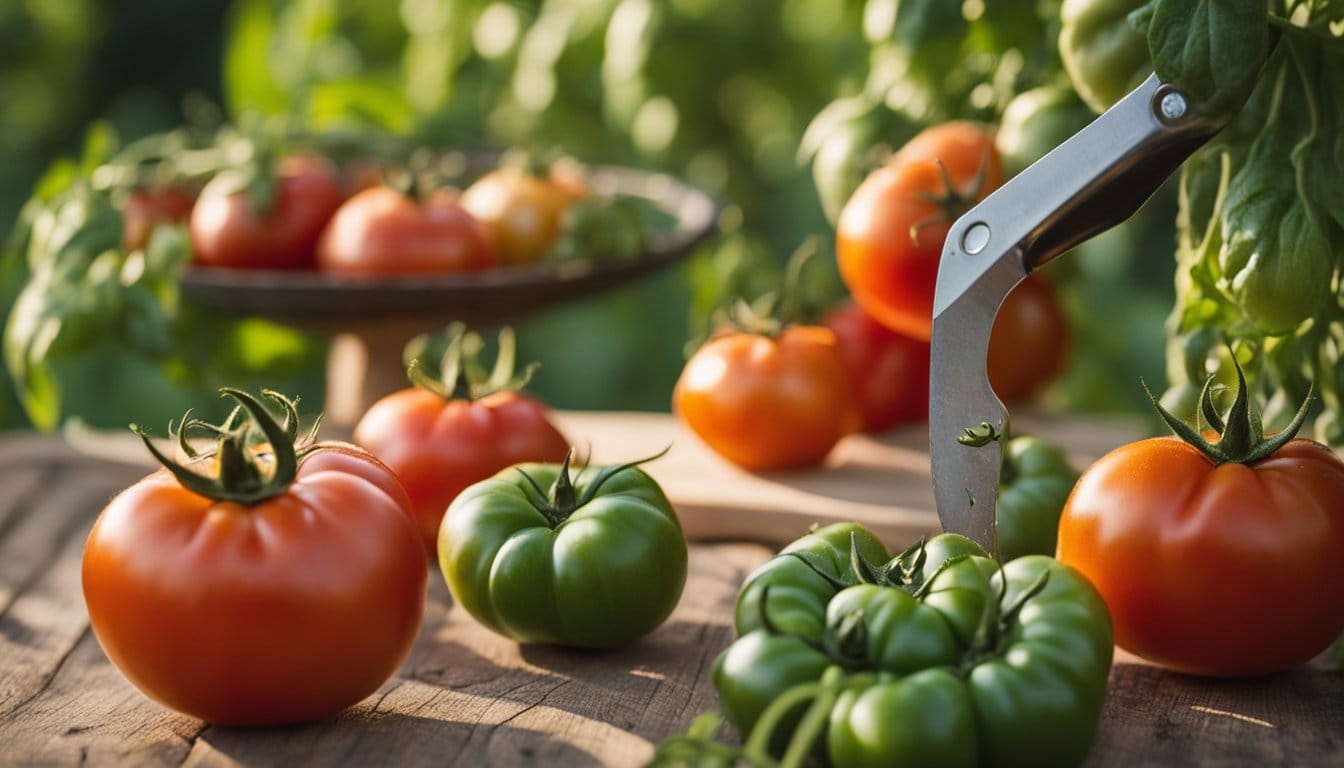
When the time comes, properly harvesting your tomatoes will ensure the best flavor, while proper storage can extend your enjoyment beyond the growing season.
Knowing When to Harvest Fruit
Tomatoes are ready to harvest when they have reached their full size and are evenly colored, with a slightly softer texture compared to unripe, firm ones.
The best indicator is color; ripe tomatoes generally boast a vibrant red, although some varieties may mature into shades of yellow, orange, purple, pink, brown, or green.
If you're anticipating a frost or have an abundance of green tomatoes, they can be picked and allowed to ripen indoors at room temperature, away from direct sunlight.
Tomatoes harvested green will not develop the same depth of flavor as vine-ripened fruits but can still be enjoyable.
- Look for even coloration without green around the stem.
- Feel the fruit—it should yield slightly to pressure but not be too soft.
Storing and Utilizing Tomatoes
After harvesting, store your tomatoes at room temperature, away from direct sunlight, to preserve their taste.
Refrigerating ripe tomatoes can lead to a loss of flavor and a mealy texture, so keeping them on a countertop or in a pantry is best.
Use ripe tomatoes to create flavorsome recipes, from fresh salads to hearty sauces.
Storage tips:
- Keep ripe tomatoes on the counter, stem side up, and use them within a few days.
- Store green tomatoes at room temperature until they ripen.
Utilize green tomatoes for recipes like fried green tomatoes or chutneys, which can deliver a unique taste experience contrasting with the ripe ones.
Whether you're enjoying fresh, vine-ripe tomatoes or green varieties, remember that your harvesting and storage methods directly impact the quality and flavor of your homegrown fruit.
Frequently Asked Questions
Growing tomatoes successfully hinges on understanding and managing the plant's specific needs.
Below, you'll find answers to some of the most frequently asked questions that can steer you toward a bountiful tomato harvest.
What are the optimal conditions for planting tomatoes?
Tomatoes thrive in warm conditions, requiring temperatures above 55°F (13°C).
Your planting site should receive at least 6-8 hours of sunlight daily, and soil temperatures must be warm. Ensure the soil is well-drained and nutrient-rich to provide the best start for your plants.
How can you grow tomato plants in a greenhouse environment?
In a greenhouse, your tomatoes can be sheltered from harsh weather while enjoying stable temperatures and humidity levels.
Use a thermometer to maintain an interior temperature between 70°F and 80°F during the day, not below 55°F at night. Regular ventilation is crucial to prevent disease.
What are the effective methods for fertilizing tomato plants?
Fertilize tomato plants with a balanced blend high in phosphorus and potassium to support fruit development.
Begin fertilizing after the first fruit set, and continue feeding every two weeks using a water-soluble fertilizer, following manufacturer instructions to avoid overfeeding.
Can tomato plants be effectively grown indoors, and if so, how?
Yes, you can grow tomatoes indoors. Choose compact varieties and ensure they can access 6-8 hours of sunlight from a south-facing window or use grow lights.
Pots should be large, at least 18 inches in diameter, and have drainage holes to prevent root rot.
What are the best practices for planting tomatoes in regions with poor soil quality?
Use raised beds or containers with a high-quality potting mix for areas with poor soil.
Amend the soil with compost and well-rotted manure to improve fertility and texture.
Regular testing and adjusting the pH to between 6.0 and 6.8 will promote healthy plant growth.
What should tomato growers know about companion planting to avoid negatively impacting their plants?
Companion planting can enhance tomato health and yield—plant tomatoes with basil, marigolds, or garlic to deter pests.
Avoid planting tomatoes near cabbage or kohlrabi, as they can stunt each other's growth. Proper spacing is essential to provide adequate air circulation and prevent disease.



